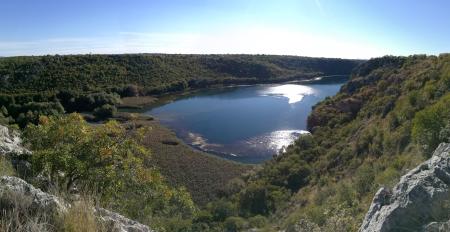
Objective:
The objectives of the Krka National Park hypogeous fungi research project are: (1) To determine the diversity of hypogeous macro-fungi in forest ecosystems of the Krka National Park, (2) To identify collected hypogeous fungi samples to species level by morphological and molecular methods, (3) To determine relationships between fungi, plants, soil, geological background, climatic and other significant ecological factors in the studied habitat, (4) Develop material for an educational trail, (5) Develop materials for holding thematic workshops on fungi in the Krka National Park.
Context:
National Park Krka is situated in central Dalmatia, Croatia, near the town of Šibenik, and it spreads on the area of 109 square kilometers. The continued use of natural resources of the wider area of the Krka National Park (deforestation, felling, fires, grazing) has led to the emergence of various degradation stages of vegetation and soil devastation by erosion. The present progressive development of forest vegetation has been made possible by the designation of the area as a national park. The development of forests and their ecosystems also increased biodiversity. The study of hypogeous fungi sought to determine the potential for the development of a new tourism offer - mycotourism.
Contacts:
Anton Brenko, antonb@sumins.hr, https://www.sumins.hr/djelatnici/anton-brenko/?lang=en